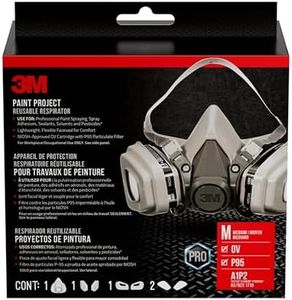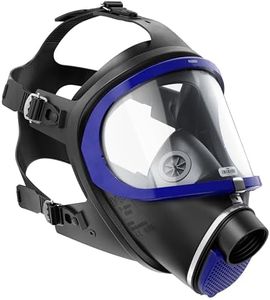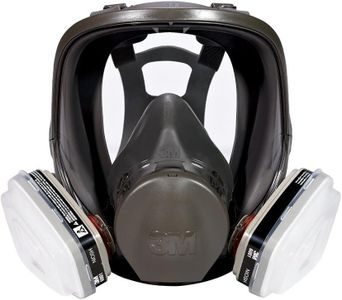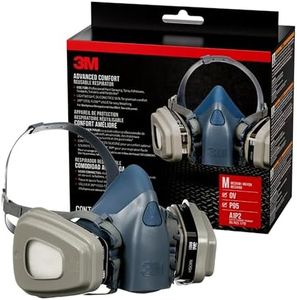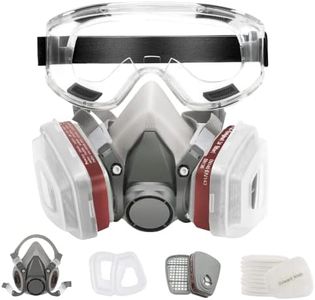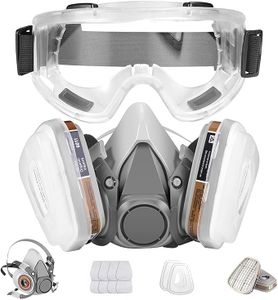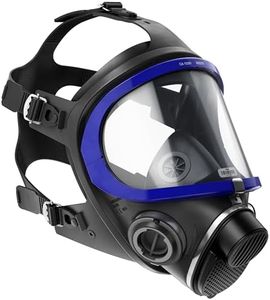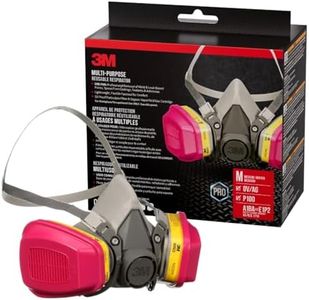We Use CookiesWe use cookies to enhance the security, performance,
functionality and for analytical and promotional activities. By continuing to browse this site you
are agreeing to our privacy policy
10 Best Paint Respirator Mask
From leading brands and best sellers available on the web.Buying Guide for the Best Paint Respirator Mask
Choosing the right paint respirator mask is critical for your health and safety when working with paints or chemicals. A good respirator ensures you're not inhaling dangerous fumes, dust, or particles. Before buying, think about how often you'll use the mask, what materials or chemicals you'll be exposed to, the comfort of the mask, and how easy it is to use or maintain. Understanding what different specifications mean will help you get a mask that suits your needs and keeps you safe while you work.Filter TypeThe filter type determines what kinds of particles or vapors the mask protects you from. Common filter types include particulate filters (for dust and paint mist), organic vapor cartridges (for solvent-based paints), and combination filters. Choosing the right filter is crucial—if you're working with oil- or water-based paints, particulate filters are usually enough, but for strong-smelling paints or solvents, an organic vapor cartridge is essential. Assess what substances you'll encounter to pick the right filter, and remember that filters need regular replacement to stay effective.
Mask Fit and SealMask fit refers to how snugly the respirator sits on your face and how well it forms a seal. This is important because a poor fit lets harmful substances bypass the filter and enter your lungs. Masks come in different sizes and styles, like half-face or full-face. Half-face covers your nose and mouth, while full-face masks offer extra protection for your eyes and skin. For occasional, light work, a half-face mask is usually fine, but for longer or more intense jobs, consider a full-face mask. Always follow fitting instructions and check for leaks to ensure a proper seal.
Comfort and AdjustabilityA comfortable mask will make it easier to wear for long periods without fatigue. Look for features like soft straps, adjustable headbands, and a lightweight design. If you're sensitive to pressure or heat, these features can make a big difference. The right mask should feel secure but not too tight. If you're likely to wear glasses or safety goggles, check that the mask won't get in the way or cause fogging.
BreathabilityBreathability relates to how easy it is to breathe through the mask. Higher-quality respirators use filters that balance protection with airflow, so you don't feel suffocated while working. If you plan to wear the mask for extended times, or during exertion, prioritize breathability. You may notice some masks are harder to breathe through when their filters are older or clogged, so regular filter maintenance helps keep breathing easy.
Maintenance and ReusabilitySome masks are disposable, while others have replaceable filters or cartridges, making them reusable over time. Maintenance includes cleaning the mask body and replacing filters as needed. If you expect to paint often, a reusable mask may be more practical and environmentally friendly. Choose one where parts are easy to replace and instructions are easy to follow. Make sure replacement filters are easily available for your mask type.
